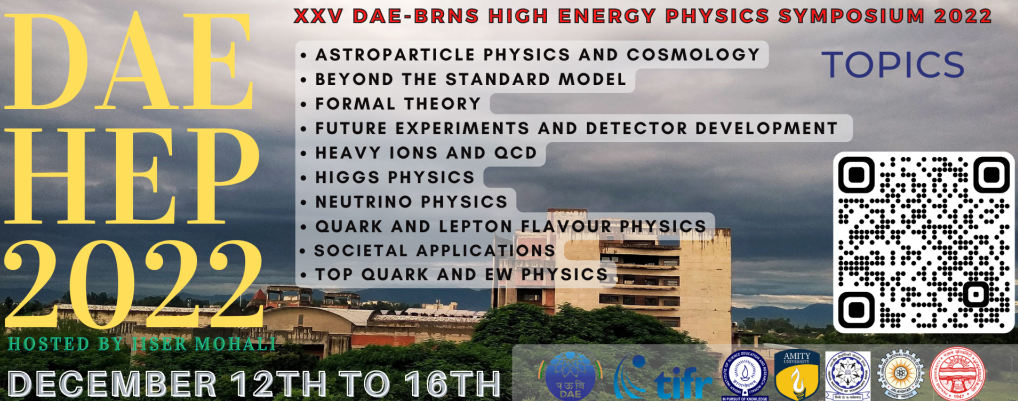Speaker
Description
The dark matter (DM) problem has been investigated and discussed
in many papers, within the regime of quantum field theories at zero
temperature. Experimental evidence of DM from various experiments such
as Planck, limits the relic abundance of Dark Matter, $\Omega_{DM}h^2 \sim
0.120 \pm 0.001$, with data from both Planck and WMAP.
The precision on this result is expected to improve
further. Hence it becomes important to calculate DM annihilation cross
sections to better precision. In particular, thermal contributions to
the annihilation cross section can become significant.
It therefore becomes important to investigate the problem using thermal
field theory techniques. Such theories of bino-like DM interacting
with a heat bath of fermions, scalars and photons, have already been
shown to be infra-red (IR) finite to all orders in perturbation theory
[1] .
We therefore use these theories to find the temperature dependence of
the DM annihilation cross sections.
An MSSM-inspired model [2], with a bino-like Dark Matter candidate $\chi$ is
used for investigating the temperature dependence of the cross
section for the process $\chi \chi \to f \overline{f}$. Here $f$'s are
the Standard Model fermions and $\phi$'s are charged scalar doublets.
We have computed the 1-loop higher order thermal corrections to this
scattering cross section. We find terms with $T^2$ dependence, at order $\alpha$, where $T$ is the temperature of the heat
bath. The calculations are performed within the approximation where the
scalar mass is large, $m_\phi > m_\chi$, much larger than the fermion
mass. The thermal region of interest in calculating the relic densities
is in the region $m_\chi/T \sim 20$, at freeze-out, after the electro-weak phase
transition. A novel feature of the calculation
is its use of the Grammer-Yennie technique [3] to isolate the
IR finite components.
Keywords : Dark Matter, Thermal field theory, IR divergences
References :
[1] Pritam Sen, D. Indumathi, Debajyoti Choudhury,
Eur.Phys.J.C ,79, (2019) 6, 532.
[2] M. Beneke, F. Dighera, A. Hryczuk, JHEP, 1410 (2014) 45;
[Erratum: JHEP ,1607 (2016) 106.
[3] G. Grammer, Jr. and D. R. Yennie, Phys. Rev. ,D 8
(1973) 4332.
| Session | Astroparticle Physics and Cosmology |
|---|
